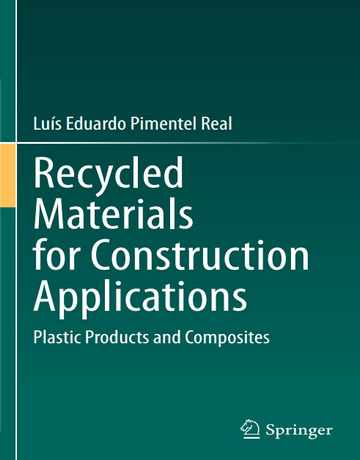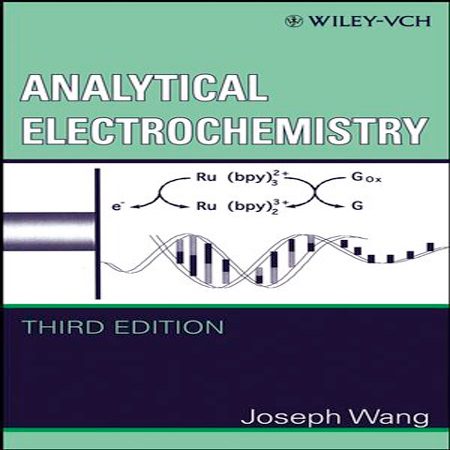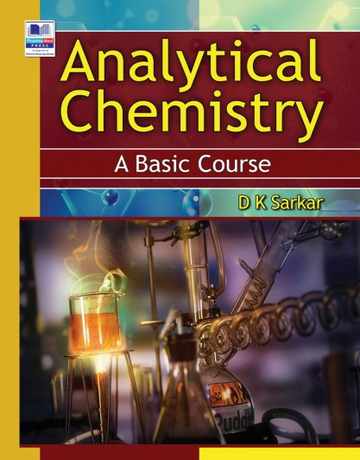دانلود کتاب مبانی و اصول شیمی تجزیه Fundamentals of Analytical Chemistry by D K Sarkar 2021 شامل آموزش مبانی و اصول پایه شیمی تجزیه است. شیمی تجزیه، موضوعی بسیار مهم، توسط افرادی با علایق مختلف انجام می شود. برخی از کاربران اصلی این موضوع عبارتند از: دانشجویان و محققان علوم پایه و شیمی تجزیه دستگاهی، داروسازی، پزشکی و تشخیص بالینی، دامپزشکی، کشاورزی و زیست شناسی، تحلیلگران آزمایشگاه های جرم شناسی و علوم پزشکی قانونی، آژانس های نظارت بر آلودگی محیط زیست، باقیمانده آفت کش ها، مواد غذایی.
استانداردهای ایمنی در شیمی، و کسانی که با آزمایشگاه های کنترل کیفیت صنایع مرتبط هستند. همه این تحلیلگران سنجش کمی مواد مورد علاقه و نگرانی خود را انجام می دهند. در عمل، یک شیمیدان تجزیه باید ذهنی کنجکاو داشته باشد و به هر عملی، صرف نظر از اینکه بسیار کوچک، ساده، ابتدایی و پیش پا افتاده باشد، تسلط کامل داشته باشد – از نظر تئوری، عملی و مهارت. از تجزیه و تحلیل یک تحلیلگر صرفاً بدون این دستور و دانش در کل، در قدرت خود ناقص است.
این استدلال، عقل و منطق، تحلیلگر را تحریک میکند تا به دنبال جایگزینهایی باشد که حتی بهتر از آنچه در کتابچه ذکر شده است، باشد. در نهایت منجر به نتایج دقیقتر و دقیقتر آنالیز میشود، همچنین تحلیلگر باید از دلایل حفظ شرایط واکنش خاص مانند pH، دما، قدرت یونی، فشار اتمسفر، زمان و غیره در طول دورهی واکنش کاملاً آگاه باشد. تجزیه و تحلیل، پیامدهای عدم پایبندی به شرایط تعریف شده، لزوم استانداردسازی روش تجزیه و تحلیل با بررسی بازیابی، و استخراج فرمول تعیین شده در بخش بر روی محاسبات.
تا این حد، تحلیلگر باید مستندسازی، منتشر کند و دیگران را از کاستی ها آگاه کند تا نتایج اشتباه در آینده توسط او یا شخص دیگری تکرار نشود. این کتاب تلاشی است برای برانگیختن این جنبه ها در ذهن کنجکاو یک شیمیدان تجزیه ای. علاوه بر این، این احساس وجود داشت که نیاز به کتاب مبانی شیمی تجزیه به زبانی آسان و قابل درک بیشتر برای دانشجویان مقطع کارشناسی ارشد علوم پایه و کاربردی وجود دارد.
فهرست مطالب کتاب
- THEORETICAL ASPECTS
- CHAPTER 1: Introduction
- 1 Two Major Divisions of Analytical Chemistry
- 2 Common Methods in Quantitative Analysis
- 3 Working Out Simple Calculations in Quantitative Analysis
- CHAPTER 2 : Concentrations of Solutions
- 1 Concentration of a Solution
- 2 Expressing the Concentrations of Solutions2.3 Equivalent and Equivalent Weight
- 4 Equivalent Weight of a Substance May Vary
- 5 Interconversion of Major Concentration Terms
- 6 Standard Solution and Standardization
- 7 Primary Standard Substance
- 8 Secondary Standard Substance
- 9 Primary and Secondary Standard Solutions
- 10 Practical Considerations for Standardization Based on Titrimetry
- 11 Working Out Calculations on Concentrations of Solutions,
- Equivalent Weight, and Normality, Molarity and Molality of Solutions
- CHAPTER 3: Basic Principles of Quantitative Analysis
- 1 Reversible and Irreversible Reactions3.2 Law of Mass Action
- 3 Acids and Bases
- 4 Conjugate Acid and Conjugate Base
- 5 Strong and Weak Electrolytes
- 6 Degree of Dissociation of Weak Electrolytes
- 7 Dissociation Constant of Weak Acids –
- 8 Ostwald’s Dilution Law
- 9 Solubility Product
- 10 Difference Between Solubility Product and Ionic Product
- 11 Solubility of Sparingly Soluble Salts in Relation to their Solubility Product
- 12 Precipitation of Sparingly Soluble Salts
- 13 Solubility Product and Common Ion Effect
- 14 Applications of Common Ion Effects3.15 Effects of Diverse Ions on the Solubility of Salts
- 16 Complex Ions
- 17 Ionic Product of Water – The Basis for pH Scale
- 18 pH of Strong and Weak Acids and Bases
- 19 Buffers
- 20 Henderson Hasselbalch Equation
- 21 Hydrolysis of Salts
- 22 Hydrolysis Constant of Salts
- 23 Oxidation Reduction Reactions
- 24 Oxidation Reduction Reactions Expressed in Ionic Forms
- 25 Redox Potential and the Two Component Half Reactions of a Redox Reaction
- 26 Oxidation State and Oxidation Number
- 27 Balancing Oxidation Reduction Reactions3.28 Working Out Calculations on pH, Degree of Dissociation, Solubility and Precipitation of Salts, Solubility Product, Preparation and pH of Prepared Buffers
- CHAPTER 4: Titrimetric Analysis
- 1 Essentials of Titrimetric Analysis
- 2 Prerequisites for the Reaction Between Titrant and Titrand
- 3 Different Kinds of Titrimetry
- 4 Indicators in Titrations
- 5 Salient Characteristics of an Indicator
- 6 Different Kinds of Indicators
- CHAPTER 5: Acid Base Titrimetry
- 1 Indicators for Acid Base Titration
- 2 Criteria for Selecting Indicators in Acid Base Titrations5.3 Major Classes of Acid Base Indicators
- 4 Mixed and Screened Indicators
- 5 Acid Base Titration Curves
- 6 Titration of Polybasic Acids
- 7 Indicators for Neutralization of by Strong Acid
- CHAPTER 6: Nonaqueous Acid Base Titrimetry
- 1 Advantages and Disadvantages Nonaqueous Titrimetry
- 2 Components of a Nonaqueous Titration
- 3 Different Types of Nonaqueous Titrations.
- 4 Preparation of the Titrants of Nonqueous Titrimetry
- 5 Determination of Pharmaceutical Substances by Nonaqueous Acid Base Titrimetry
- CHAPTER 7: Oxidation Reduction Titrimetry
- 1 Common Oxidizing and Reducing Agents
- 2 Major Types of Oxidation Reduction Titrimetry
- 3 Theory of Oxidation Reduction Titrimetry
- 4 Redox Potentials and Equilibrium Constants of Oxidation Reduction Reactions
- 5 Formal Potential
- 6 Oxidation Reduction Titration Curves
- 7 Indicators in Oxidation Reduction Titrimetry
- 8 Redox Indicators in Frequent Use
- CHAPTER 8: Precipitation Titrimetry
- 1 Prerequisites of Precipitation Titrimetry
- 2 Precipitation Titration Curves8.3 Precipitation Titration Indicators
- 4 Commonly Used Adsorption Indicators
- CHAPTER 9: Complexometric Titrimetry
- 1 Essentials of Complexometric Titrimetry
- 2 Complexometric Titrations
- 3 Ethylenediaminetetraacetic Acid (EDTA)
- 4 Conditional Formation Constant Further Reduced by More Than One Complexing Agent
- 5 Complexometric Titration Curves
- 6 Other Polydentate Ligands
- 7 Types of Complexometric Titrations
- 8 Complexometric Titration Indicators
- 9 Complexometric Titrations Without Metal Ions’ Specific Indicators
- 10 Complexometric Titration Indicators in Wide Use
- 11 Use of Redox Indicators in Complexometric Titrations
- 12 Screening Effect of Complexometric Titration Indicators
- PART II
- STANDARD SOLUTIONS
- CHAPTER 10: Primary and Secondary Standard Solutions
- 1 Standard Solution
- 2 Primary Standard Substances
- 3 Primary Standard Solution
- 4 Secondary Standard Solution
- CHAPTER 11: Preparation of Standard Solutions
- 1 Standard Hydrochloric Acid Solution11.2 Standard Sulfuric Acid Solution
- 3 Standard Nitric Acid Solution
- 4 Standard Acetic Acid Solution
- 5 Standard Sodium hydroxide Solution
- 6 Standard Potassium permanganate Solution
- 7 Standard Sodium thiosulfate Solution
- 8 Standard Iodine Solution
- 9 Standard EDTA Solution
- 10 Standard Silver nitrate Solution
- 11 Standard Ammonium and Potassium thiocyanate Solution
- 12 Standard Bromine Solution
- 13 Standard Ferrous sulfate Solution
- 14 Standard Potassium ferrocyanide Solution
- 15 Standard Stock Solutions of Some Metal and Nonmetal Ions
- PART III INSTRUMENTAL METHODS OF ANALYSIS
- CHAPTER 12: Colorimetry and UV-Visible Absorption Spectrophotometry
- 1 Electromagnetic Radiation
- 2 Theory of Colorimetry and Absorption Spectrophotometry
- 3 Deviations from Beer’s Law
- 4 Applications of Beer-Lambert Law
- 5 Instrumentation – Component Parts of a Colorimeter /
- Absorption Spectrophotometer
- 6 Commercial Instruments
- CHAPTER 13: Flame Photometry
- 1 Principle of Flame Photometry13.2 Low Population of the Excited Atoms – Limited Application of Flame Photometry
- 3 Instrumentation
- 4 Advantages and Limitations of Flame Photometry
- 5 Determination by Flame Photometry
- CHAPTER 14: Atomic Absorption Spectrophotometry
- 1 Principle of Atomic Absorption Spectrophotometry
- 2 Instrumentation
- 3 Single and Double Beam Atomic Absorption
- Spectrophotometer
- 4 Interferences in Atomic Absorption Spectrophotometry
- 5 Sample Preparation
- 6 Calibration of the Instrument
- CHAPTER 15: Potentiometry
- 1 Theory of Brief
- 2 Applications of Potentiometry
- 3 Direct Potentiometry and Potentiometric Titrations
- 4 Measuring Set-up in Potentiometry
- 5 Common Electrodes in Potentiometry
- 6 Working of a pH Meter – A Potentiometer
- 7 Potentiometric Titrations
- 8 Salient Aspects of Potentiometric Titrations
- 9 Titration Curves and Equivalence Point Detection in Potentiometric Titrations
- 10 Gran’s Plot
- 11 Potentiometric Titration – Illustration of Data Processing for
- Equivalence Point Titrant Volume
- 12 Advantages of Potentiometric Titrations15.13 Disadvantages of Potentiometric Titrations
- 14 Experiments on Potentiometric Titrations
- CHAPTER 16: Polarography
- 1 Theory of Polarography
- 2 Advantages and Disadvantages of Polarography
- 3 Basic Set-up of a Polarographic Analysis and the Polarograms
- 4 Dropping Mercury Electrode (DME) – Advantages, Disadvantages, and Care and Maintenance
- 5 Polarographic Currents
- 6 Ilkovic Equation
- 7 Half-wave Potential
- 8 Polarographic Analysis – Generalized Experimental Protocol16.9 Detection and Quantification by Polarography
- 10 Successive Determinations of A Series of Substances and their Chemically Altered Derivatives by their Half-wave Potentials
- 11 Half-wave Potential of A Complex Ion
- 12 Removal of Dissolved Oxygen in Polarographic Analysis
- 13 Applications of Polarography
- 14 Polarographic Analysis – Two Specific Determinations
- PART IV
- ERRORS IN QUANTITATIVE ANALYSES
- CHAPTER 17: Errors in Analyses – Evaluation and Minimization
- 1 Errors in Analysis
- 2 Classification of Errors in Analysis
- 3 Precision and Accuracy of An Analysis
- 4 Quantification of Precision of An Analysis17.5 Quantification of Accuracy of An Analysis
- 6 Discarding a Replicate Result of An Analysis
- 7 Distribution of the Results of An Analysis
- 8 Comparing the Results of An Analysis
- Appendix
- Laboratory Safety and Work Ethics
- Index
مشخصات کتاب
- عنوان فارسی: اصول شیمی تجزیه
- نویسنده(ها): D K Sarkar
- سال انتشار: 2021
- زبان نوشتاری: انگلیسی
- شابک: B0973X9QW6, 9789390211401
- تعداد صفحات: 761 صفحه
- فرمت فایل: EPUB
- حجم فایل فشرده: 9.95 مگابایت








دیدگاهها
هیچ دیدگاهی برای این محصول نوشته نشده است.